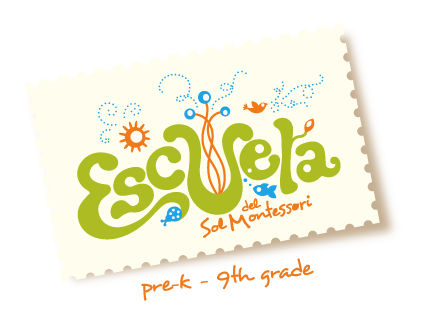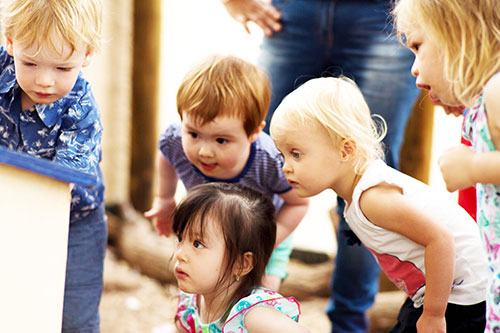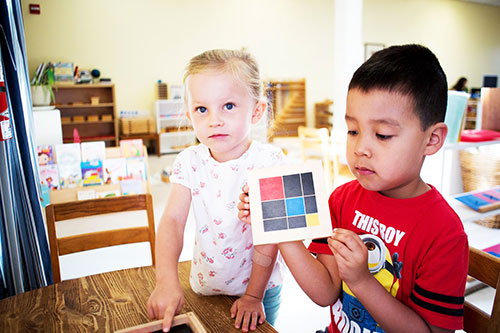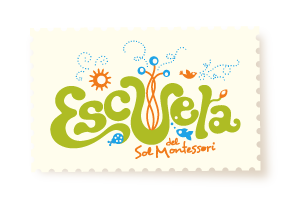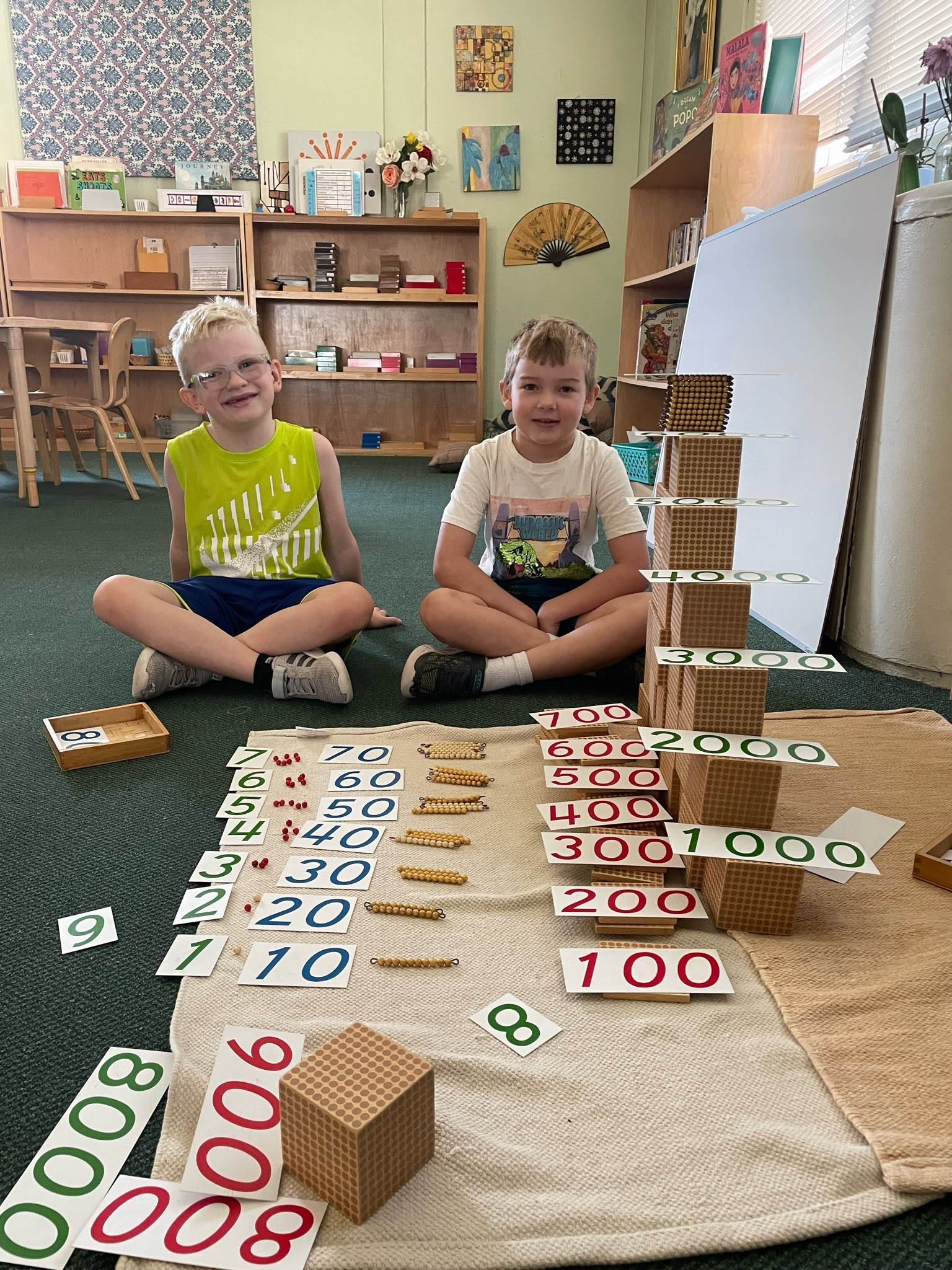 A veteran Montessori teacher once explained the three-year cycle in the following way: a Montessori classroom is like a bakery. In the first year, you find all of the ingredients. In the second year, you mix them all together. But the third year is truly magical – that year, you take the cake out of the oven and feel amazed by the result. This analogy is a great one because it shows the significant advantages of a three-year classroom cycle. Whether in the Early Childhood or Elementary levels, guides often remark on the remarkable accomplishments and revelations of the third-year child. The third year allows children to consolidate social-emotional and intellectual skills, and develop greater self-awareness and pride in their unique gifts and abilities.
A veteran Montessori teacher once explained the three-year cycle in the following way: a Montessori classroom is like a bakery. In the first year, you find all of the ingredients. In the second year, you mix them all together. But the third year is truly magical – that year, you take the cake out of the oven and feel amazed by the result. This analogy is a great one because it shows the significant advantages of a three-year classroom cycle. Whether in the Early Childhood or Elementary levels, guides often remark on the remarkable accomplishments and revelations of the third-year child. The third year allows children to consolidate social-emotional and intellectual skills, and develop greater self-awareness and pride in their unique gifts and abilities.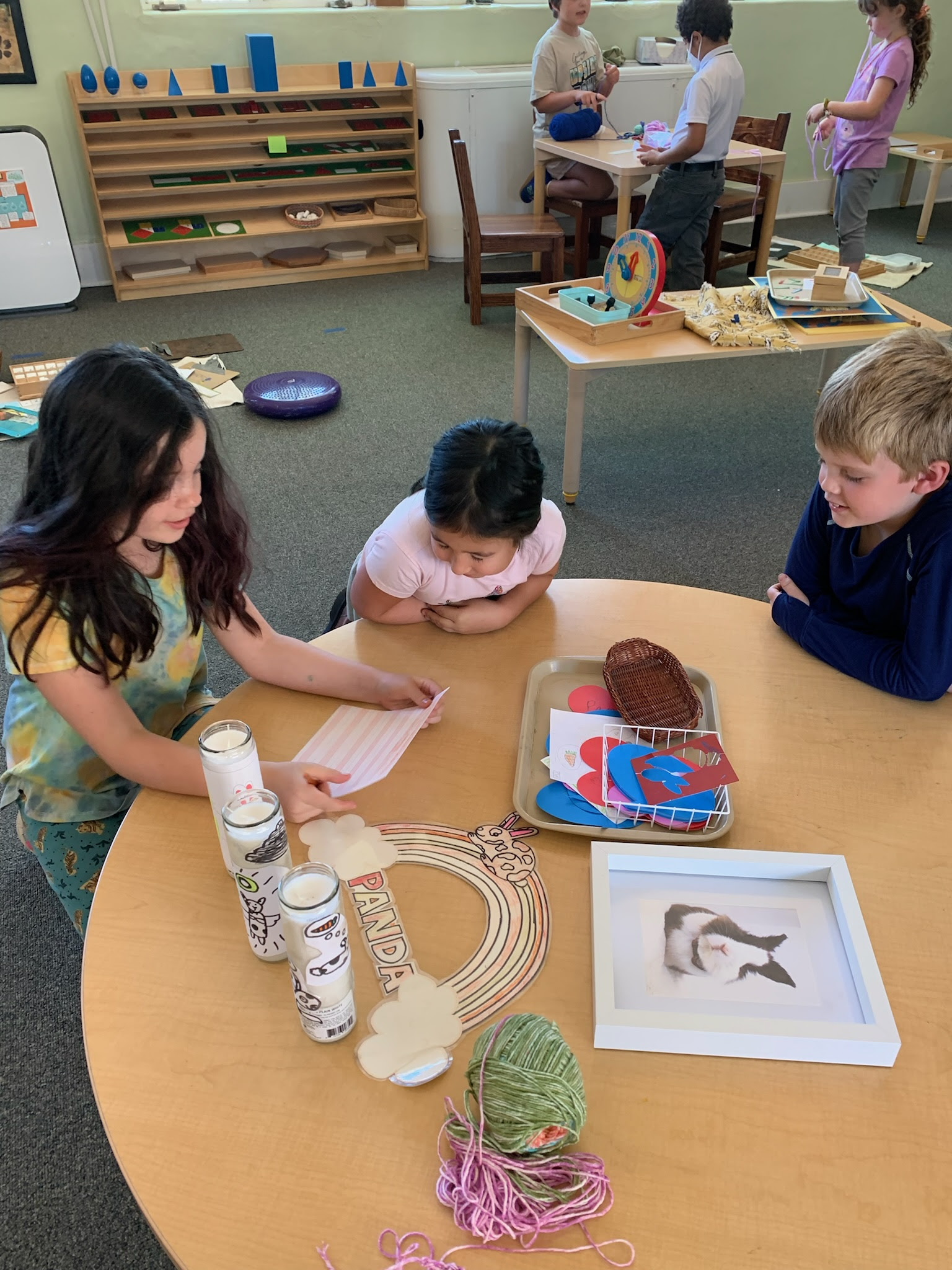 Another benefit is familiarity with the classroom setting and materials. In the Montessori classroom, the adult guide presents key materials in the classroom with clear lessons that introduce new concepts and invite exploration. However, any great Montessori teacher knows that the most powerful learning happens through independent work on the part of the child as they make their own exciting discoveries. Most materials have multiple lessons that are introduced at different points in academic progress. Being in the same environment for three years allows children to return to materials repeatedly, making new discoveries and solidifying knowledge. Watching the oldest children in the classroom demonstrate their knowledge to younger students is one sign of the consolidation of information, evidence of mastery of a concept. The familiarity of the classroom, knowing where items are located, and how the routines of the community are applied allows them to focus on learning and amplifies independent exploration.
Another benefit is familiarity with the classroom setting and materials. In the Montessori classroom, the adult guide presents key materials in the classroom with clear lessons that introduce new concepts and invite exploration. However, any great Montessori teacher knows that the most powerful learning happens through independent work on the part of the child as they make their own exciting discoveries. Most materials have multiple lessons that are introduced at different points in academic progress. Being in the same environment for three years allows children to return to materials repeatedly, making new discoveries and solidifying knowledge. Watching the oldest children in the classroom demonstrate their knowledge to younger students is one sign of the consolidation of information, evidence of mastery of a concept. The familiarity of the classroom, knowing where items are located, and how the routines of the community are applied allows them to focus on learning and amplifies independent exploration.
However, the most significant benefit of a three-year cycle is how it empowers individuals to become their best selves. Dr. Montessori reminds us that the real work of the child, rather than any academic task, is to construct the individual they will become. In our Montessori classrooms, each child gets to experience being the youngest and oldest community member over the three-year cycle. For the youngest children, in their first year, there are role models close to their age throughout the community. Dr. Montessori often pointed out that these students can sometimes explain concepts to their classmates in ways that make more sense than information presented by an adult. The benefits for older children are equally valuable. As they naturally share their knowledge and experience with younger students, they develop a sense of self-worth through their contributions to the community. They develop pride in the knowledge they have mastered and can now share. They build confidence through their newly acquired independence and their ability to direct their own learning. And these qualities and deep understanding of who they are as individuals, do far more than prepare them for the next stage of school – it prepares them for life.

